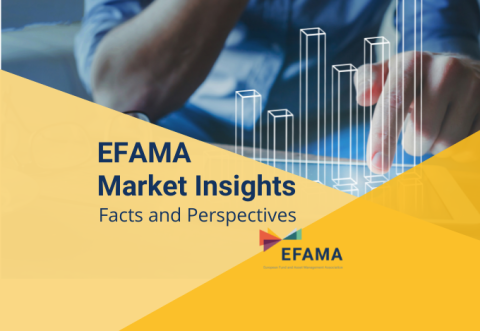Sustainable Finance
The asset management industry plays a key role in meeting the objectives of the European Green Deal to make the EU’s economy sustainable. Our members integrate ESG considerations across their risk management processes and investment decisions. They develop sustainable investment products and foster transparency to fight greenwashing. This increases choice, trust and, in turn, retail investors’ participation. Overall, such efforts mobilise capital towards a fair and just transition to a climate-neutral economy by 2050.
EFAMA actively contributes to the development and implementation of EU’s sustainable finance initiatives. Among them are a comprehensive transparency framework for financial market participants, standards and labels for green financial products, classification of green economic activities and policies enhancing corporate sustainability reporting.
EFAMA's reply to European Lab's future projects agenda consultation
EFAMA response to the call for feedback on TEG report on EU taxonomy
EFAMA's response to ESMA survey on collection of evidence on undue short-term pressures from Financial Sector on Corporations
EFAMA response to EC CfE ESG ratings and sustainability risks in credit ratings
EFAMA welcomes the opportunity to respond to the EC’s targeted consultation on the functioning of the ESG rating market in the EU and on the consideration of ESG factors in credit ratings. Please note that our response covers, at the same time, ESG ratings and ESG data providers, as the demand for ESG “raw” data has been increasing at a steady pace. The use of ESG data has also rapidly shifted from a narrow set of investment products to being prolific across all investment products.
Sustainable UCITS Bond Funds for a Better Future | Market Insights | Issue #9
EFAMA released today a new issue of its Market Insights series titled ‘Sustainable UCITS Bond Funds for a Better Future'. This report highlights the strong demand for UCITS bond funds that apply ESG strategies in their portfolio selection, confirming the growing interest of investors for ESG products. It analyses the investment characteristics of this type of funds and compares their performance and fees with those of traditional bond funds.
FinDatEx publishes EET v1.0 and EMT v4.0
The European ESG Template (EET) is meant to facilitate the necessary exchange of data between product manufacturer and distributor for the purpose of fulfilling ESG-related regulatory requirements contained in the SFDR, relevant provisions of the Taxonomy Regulation, and the relevant delegated acts complementing MiFID II and IDD. The EET V1 is based on the regulatory situation on the day of publication and will be reviewed regularly depending on the evolving regulation, and at least confirmed annually. With regard to the MiFID target market, the EET interacts with the EMT V4.
Market Insights #18 - Sustainable Equity UCITS
This report looks specifically at the evolving trends of the equity asset class of sustainable UCITS, whose share is the highest (53%) in total sustainable UCITS funds. It highlights their role as investment vehicles in facilitating the green transition. The universe of sustainable equity UCITS funds is defined based on Morningstar’s classification of sustainable financial instruments1. This means funds must claim to have a sustainability objective, and/or use binding ESG criteria for their investment selection.
Sustainable Investing Explained in 9 Questions
EFAMA launches its new brochure "Sustainable investing explained in 9 questions".
Despite the growing interest and importance of sustainable investing, most EU citizens often find it difficult to navigate this relatively new investment landscape.
In the brochure we explore :
EFAMA Asset Management Report 2022
EFAMA's latest edition of its 'Asset Management in Europe' report provides an in-depth analysis of recent trends, focusing on where investments funds and discretionary mandates are managed in Europe.
The asset management sector is a crucial one for the European economy, with a key role to play in financing the green transition:
































